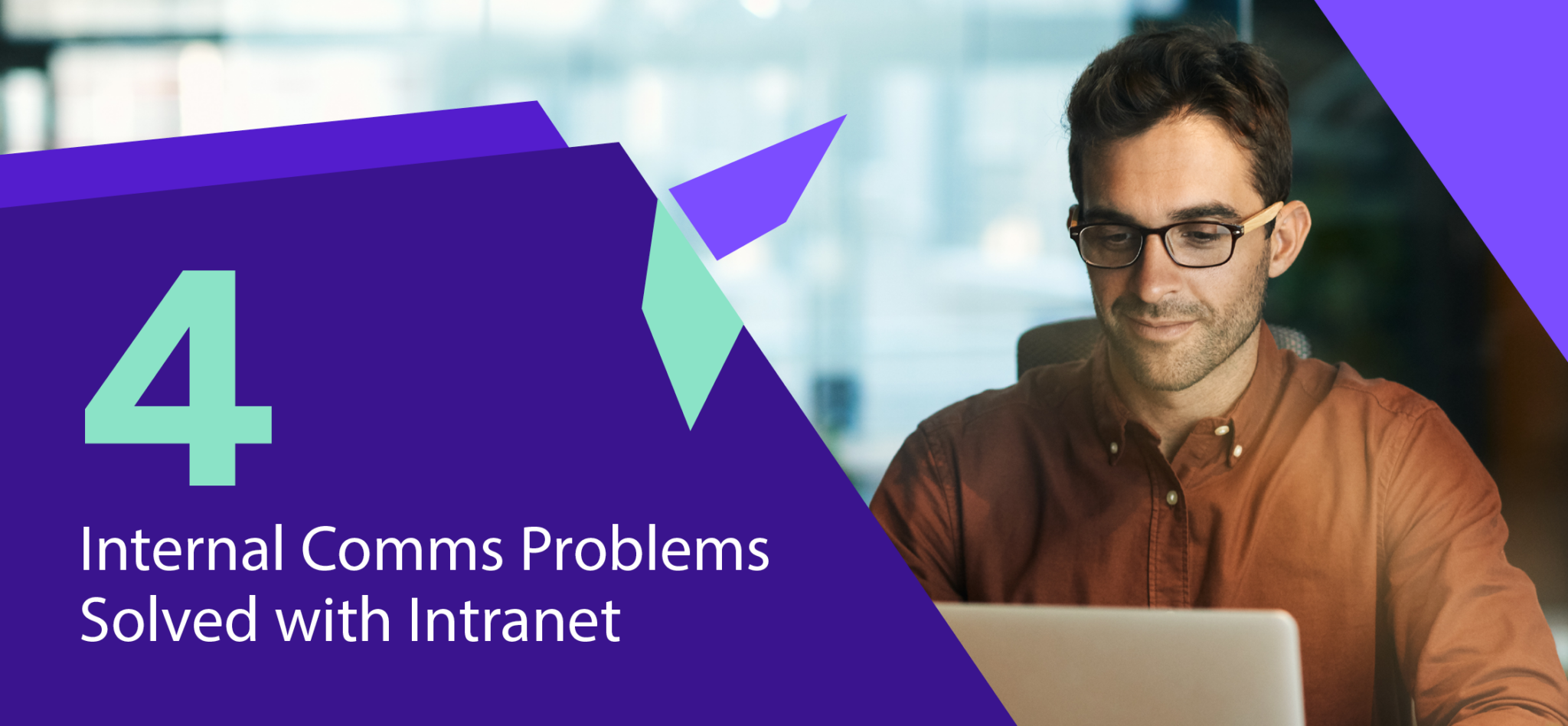With over 1 million organizations globally using Microsoft 365, it’s little surprise that SharePoint has become one of the most trusted document and file management systems in the working world.
However, even if you are an experienced internal communications expert, you might not know so much about its team site builder – SharePoint Intranet (and much less why some organizations decide to layer additional software on top of it.)
If that is the conundrum you have, keep reading, and we will explain the ‘why’ of SharePoint Intranet.
What is SharePoint Intranet?
SharePoint refers to a few different pieces of software, including the familiar on-premise document and file management system.
For our purposes, SharePoint Intranet refers to the cloud-based, ‘team site builder’ available within Microsoft 365 that helps organizations build an intranet on top of the existing document and knowledge management system (SharePoint Online).
The most important thing to know is that organizations can use it in one of two ways:
1. Standalone – an organization builds an intranet within SharePoint, using resources and hosting provided entirely by Microsoft. This is known as ‘out-of-the-box’ intranet.
2. Alongside an ‘intranet packaged solution’ – in this case, an organization will use SharePoint Online as a foundation, but extend its functionality with an ‘intranet packaged solution’ (or ‘in-a–box’ intranet solution) like LiveTiles.
Both have benefits and drawbacks, but let’s first explore why SharePoint Intranet can be a viable solution in its own right.
Why use SharePoint for Intranet?
It may come as no surprise that SharePoint intranet is a popular choice because it is often the most convenient option for organizations that use Microsoft.
Moreover, it also represents one of the lowest risk options for intranet, as well: when low adoption presents a significant risk to many digital transformation projects, deploying SharePoint intranet is a safer strategy than a non-Microsoft-based solution.
Last but not least, it is one of the simplest to use, and we will explain the three facets of it:
1. SharePoint Intranet is easy and convenient to deploy
SharePoint-based intranets are offered within many business’ existing Microsoft 365 service plans. They are template-based – meaning that a basic intranet can be built and launched very quickly (and managed by a small team with limited expertise.)
2. SharePoint Intranet is easy for users
SharePoint is (comparatively) easy for users familiar with Microsoft applications and UI, and it interacts with software such as OneDrive and Outlook, making it immediately useful to users.
3. SharePoint Intranet is easy for admins to manage
Organizations that already use Microsoft 365 can rapidly embed SharePoint Intranet into the fabric of their organization by indexing SharePoint-based policy pages, and including web parts/quick links based on resources held in Outlook and OneDrive. This makes adoption far less difficult.
Last of all, as it can be accessed natively within Teams, it’s also suitable for organizations with hybrid modes of working, and used on computer, tablet or mobile.
SharePoint’s simplicity is both its greatest strength and its biggest limitation… which leads us to consider, why an organization might want to extend its functionality with an ‘in-a-box’ solution.
Why you may need more than ‘just’ SharePoint Intranet
When we talked to Andy Hodges, Director of Thinkshare, he described the limitations of SharePoint Intranet succinctly:
“For many small businesses, out-of-the-box SharePoint will usually be good enough… An [in-a-box] solution like LiveTiles Intranet is more applicable the more users you have and more features are needed to meet more complex scenarios.”
In other words, SharePoint Intranet will fulfil the needs of a small organization – but for a large organization like a university, hospital or Fortune 500 company, the ‘out-of-the-box’ product has certain limitations.
Let’s briefly explore why:
- Large organizations with significant amounts of data and complex organizational structures need to arrange and access information quickly. This is something SharePoint ‘out-of-the-box’ can’t offer effectively without powerful search and metadata governance features.
- Large organizations also need rich insights about the effectiveness of their internal communications strategies. They can’t do this without analytics, in which SharePoint Intranet is limited.
- Lastly, as large organizations grow, they embed more business units, acquire new companies and onboard more employees. The limited template features of SharePoint Intranet make scaling the experience consistently very difficult.
In simple terms, large organizations expect their intranet to help them to achieve key strategic goals, like increased engagement and collaboration, which ‘vanilla SharePoint’ isn’t geared to do.
So, if standalone SharePoint intranet is right for some but not others, how can you make the right decision for your organization?
What are your options for SharePoint intranet solutions?
The table below should help you understand just a few of the arguments for using SharePoint as your sole Intranet software, versus the benefits of layering a solution like LiveTiles on top of it.

Build your intranet on SharePoint with LiveTiles(Omnia)
We hope that this guide to SharePoint Intranet has been helpful – and if your large or growing organization is limited by your intranet tool, an ‘in-a-box’ solution can help you make the most of your Microsoft investment, reduce the barriers to intranet adoption, and deliver a highly-personalized, yet seamless digital employee experience.
The best way to see what LiveTiles can do for you is book a demo – so why not?





